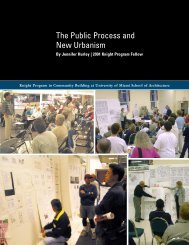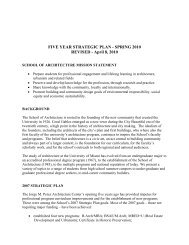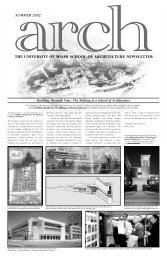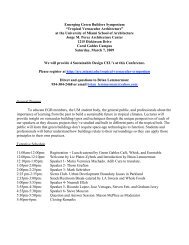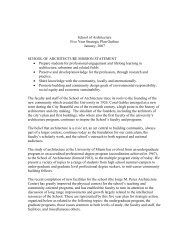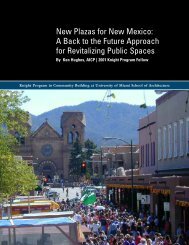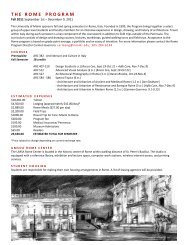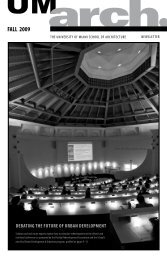Resilience - University of Miami School of Architecture
Resilience - University of Miami School of Architecture
Resilience - University of Miami School of Architecture
You also want an ePaper? Increase the reach of your titles
YUMPU automatically turns print PDFs into web optimized ePapers that Google loves.
environmental history<br />
As is typical <strong>of</strong> barrier islands, Virginia Key is a naturally dynamic enty whose<br />
form and character fluctuates over me. Anthropogenic changes to the Biscayne<br />
Bay ecosystem have supplanted hurricanes and natural dal fluctua-<br />
ons as the major cause <strong>of</strong> landscape change. Peter Harlem’s 1979 analysis<br />
<strong>of</strong> historical aerial photography provides a comprehensive review <strong>of</strong> changes<br />
to the structure <strong>of</strong> Biscayne Bay which parallel the urbanizaon <strong>of</strong> the region<br />
over the 20th century. The <strong>Miami</strong> mainland consists <strong>of</strong> a limestone ridge which<br />
separates the Everglades from the Bay and the Atlanc Ocean. Key Biscayne<br />
forms the southernmost part <strong>of</strong> a second limestone ridge underlying the chain<br />
<strong>of</strong> sandy barrier islands which protect the mainland coast (Harlem 16).<br />
Like other islands, Virginia Key was once covered predominantly with Mangrove<br />
which anchored sediment deposited by fluctuang current and dal ac-<br />
vity (Harlem 26). In the 1930’s dredging and wall construcon began to alter<br />
current flow in the Bay. Sediment began to accrete to the north <strong>of</strong> the island<br />
providing area for expansion <strong>of</strong> the mangrove swamp. By the 1950’s the island<br />
had expanded to the north by almost a half mile. The eastern third <strong>of</strong> this<br />
new area was dredged to provide fill for the sewage treatment plant which<br />
was constructed throughout the mid 1950’s. The dredged area created a sink<br />
for sand eroding <strong>of</strong>f Virginia Key Beach to the south. By the mid 1970’s jees<br />
had been constructed to slow erosion <strong>of</strong> Virginia Key beach. The northern p<br />
<strong>of</strong> the Key was surrounded by levees in the mid 1960’s and the area was used<br />
as a sanitary landfill (figures 4,5)(Harlem 94). The landfill area is now an EPA<br />
superfund site. The northwestern poron <strong>of</strong> the island was altered by the<br />
construcon <strong>of</strong> the Marine Stadium lagoon. The southern poron <strong>of</strong> the island<br />
was cleared for the Seaquarium, RSMAS campus, and federal facilies by the<br />
end <strong>of</strong> the 1950’s (figure 6).<br />
5. Virginia Key Aerials, Harlem<br />
4. Biscayne Bay in green, frame on<br />
study area, adapted from Harlem<br />
8




